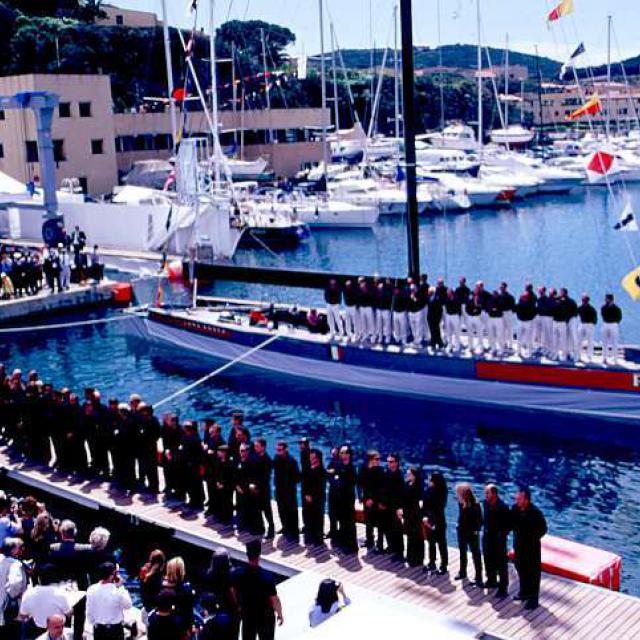A special story
Luna Rossa: the first challenge
The idea of challenging for the America's Cup came to Patrizio Bertelli in the Milan office of Argentine yacht designer German Frérs on the 3rd and 4th February 1997.
The key members of Bertelli’s team soon included yacht designer Doug Peterson, champion yachtsman Torben Grael and skipper Francesco de Angelis.
After purchasing three IACCs - USA 28 Kanza, USA 43 Might Mary and USA 23 America³ - Bertelli chose Punta Ala in Tuscany as the yacht’s Italian base with a view to training the team in conditions as similar as possible to those of Hauraki Gulf in New Zealand, the waters in which the 2000 America’s Cup was to be contested.
On 21 April 1997, the chairman of Punta Ala Yacht Club, Bruno Calandriello, formally notified the Royal New Zealand Yacht Squadron of his club’s intention to challenge for the America's Cup.
Training began on 4 July 1997.
As from 7 January 1998, the entire team spent the next two winters training in the waters off Auckland in New Zealand.
The first new ITA 45 hull was completed, following a design period of two years, in a shipyard in Grosseto in the spring of 1999.
The new yacht was launched in Punta Ala on 5 May 1999, named by Miuccia Prada in a ceremony conducted by the parish priest of Punta Ala, Don Sandro Spinelli.
The name chosen for the new ITA 45 (and all successive versions) was Luna Rossa.
According to official records, the name Luna Rossa was inspired by the huge full moon tinged with red which slowly climbed into the night sky as Bertelli and his friends were chatting of boats and boating over dinner at a house party in the hills of Tirli near Punta Ala; Miuccia Prada confirmed that it was the perfect antithesis to the name of the New Zealand defender, Black Magic.
Later was the name associated with the Neapolitan song composed by Vian and De Crescenzo in 1950 which, reinterpreted by Renzo Arbore, accompanied the yacht throughout its adventures in the southern hemisphere.
The second Luna Rossa – an ITA 48 - was launched shortly after the first and included several improvements designed to make her more suitable for racing in the light summer winds and calm seas of Hauraki Gulf.




